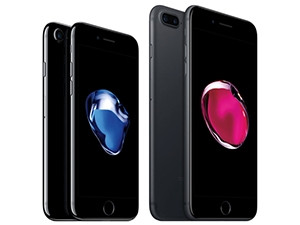
Apple's iPhone 7 and iPhone 7 Plus recently arrived in South Africa, traditionally at a hefty price. It may look like nothing much is new, but they feature both profound and subtle changes and improvements over their predecessor. Still, is it enough to trade in your older model?
At first glance, the iPhone 7 and iPhone 6s look almost identical. An extra rear side camera is what visually differentiates the iPhone 7 Plus from its predecessor. Like the iPhone 6s and 6s Plus, the new models deliver excellent ergonomics, premium material, elegant design and a pristine finish - something you might come to expect from a detailed-obsessed company like Apple. Even the connectors and tiny screws have the same colour as the device itself.
iPhone 7 | iPhone 7 Plus | |
Weight | 138g | 188g |
Dimensions | 138.3 x 67.1 x 7.1 mm | 158.2 x 77.9 x 7.3 mm |
Screen | 4.7-inch | 5.5-inch |
Resolution | 1334 x 750 (326 ppi) | 1920 x 1080 (401 ppi) |
Contrast ratio | 1400:1 | 1300:1 |
Battery capacity | 1960mAh | 2910mAh |
Rear camera | Single 12-megapixel, optical image stabilisation | Dual 12-megapixel, optical image stabilisation, wide-angle and 2x optimal zoom |
Out with the old, in with the new
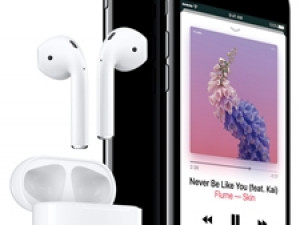
Perhaps the most profound design change in the new iPhones is the lack of a physical, analogue 3.5mm audio output connector. It was bound to happen someday and it's no surprise it's Apple who was first to take the daring and controversial step.
The audio-output jack being traded in for the more modern, compact and digital lightning-connector doesn't mean you can't use your current beloved and/or expensive headphone, though. In the box, there's a 3.5mm to lightning converter, which unfortunately is prone to getting lost and takes some of the iPhone 7's design elegance away. The new iPhones still come with a set of standard-quality earpods, however, but this time with a lightning-connector at the end of the cable.
Let's address the elephant in the room. The 3.5mm audio-connector is arguably a global standard for a huge range of audio equipment and has enabled users to connect every kind of audio-device imaginable. Why shake that all up?
Apple's official answer is quite simple and straightforward. They're 100% convinced that the future is wireless - a philosophy that I can only agree with.
Contemplating change and actually doing it are two completely separate things, however. So, to put the money where their mouth is, Apple co-introduced the new wireless AirPods with the new iPhone. Unfortunately, I haven't been able to properly review these yet. It also seems they've been delayed due to unspecified factors, but most likely because they're simply not up to Apple standards yet.
I would have expected Apple to ultimately include these new wireless devices with the iPhone 7 (Plus), given its high price and Apple's wireless philosophy. Unfortunately, there's no indication they will.
Ditching the 3.5mm audio connector also comes with some interesting design opportunities. It enables Apple to enhance their TapTic engine, the technology that provides tactile sensations in the form of vibrations to the user. Also, it facilitates some more space for a higher capacity battery. Although these arguments might be perfectly valid reasons for losing the legacy audio connector, it might inherently be seen as a flaw to some people.
Water and dust resistant
Another important benefit that comes with letting the 3.5mm audio connector go is that the iPhone 7 and iPhone 7 Plus are now water, splash and dust resistant. While Samsung struggled to get their Galaxy S7 device IP68-certified because of this legacy connector, Apple is now able to manufacture the new iPhone to be protected from liquid with relative ease. The iPhone 7 (Plus) doesn't have any extra big openings in its design that have to be made water and dust resistant. Its IP-67-certification implies they are completely dust proof, but only resistant to a limited amount of water, measured in time and pressure. In practice, they should have no trouble surviving underwater for 30 minutes at one-meter depth.
It seems Apple has kept this claim, which does create high expectations, on the safe side. Quite a lot of YouTubers have sought out the limits of the IP-67 certification by taking the new iPhone for a long swim, and at greater depths, than recommended. Luckily for them, the phone remained fully functional in most cases. Of course I had to try the water resistant feature out myself and submerged the new iPhone at slightly less than one meter for a daring 35 minutes. The phone showed no visible signs of damage afterwards and kept working flawlessly. By using the volume buttons, you can even take underwater pictures.
When taken out of the water, be sure to dry the screen - capacitive touchscreen technology uses electrical resistance to function and water messes that up.
Enhanced speaker system
It may have taken a few generations, but the new iPhones finally feature stereo sound. The first speaker sits at the right-bottom while the second one is positioned on the top of the device near the speaker normally used for a phone call. As soon as you position the iPhone 7 in landscape mode, the added speaker is turned on to produce a stereo sound. Apple uses the internal gyroscope to determine the phone's orientation.
Quality-wise, the sound is relatively deep and detail-rich for a phone this thin. I directly compared the sound quality of the new iPhone with that of the Samsung Galaxy S7 Edge, as well as the iPhone 6s and the difference is noticeable.
Screen: marginal improvement
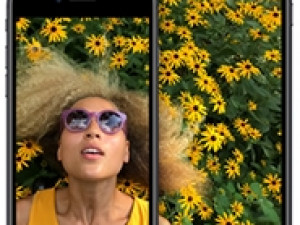
The new iPhone's screen doesn't offer revolutionary, breakthrough technology. Both the iPhone 7 and 7 Plus still make use of IPS-LCD technology where Apple could have chosen OLED-technology instead, like Samsung with the S7, which delivers vastly superior contrast levels and lower energy consumption.
Like its predecessor, the iPhone 7 has a 4.7-inch screen that can display a resolution of 1334 x 750 pixels resulting in a 326 ppi density. The iPhone 7 Plus has a 5.5-inch screen with a 1920 x 1080 resolution and 401 pixels per inch.
In practice, those specifications unsurprisingly deliver razor sharp images and text. Many of Apple's competitors, however, have phones that can display even more pixels. The inevitable downside to devices with such a disproportionally high pixel count is that they consume large amounts of resources without offering substantially better image quality in return.
The fact remains that pure screen resolution and pixel density are only part of the equation making up for overall screen quality. That's why I also measured the maximum brightness and contrast values.
Maximum brightness
The iPhone 7's screen brightness levels (590 cd/m2) don't even come close to those of the Samsung Galaxy S7 (655 cd/m2), Galaxy S7 Edge (681 cd/m2) or LG's G5 (712 cd/m2). They are, however, a marginal improvement over that of the iPhone 6s (560 cd/m2) and 6s Plus (575 cd/m2). The iPhone 7 Plus that I tested, remarkably showed somewhat lower levels (520 cd/m2) than all of the models mentioned above.
Looking at pure numbers, the iPhone 7 Plus offers slightly less readability comfort in direct sunlight than its predecessor. In practice, after working with these devices for a few weeks, I would not have noticed that, if it wasn't for the measurements I performed with dedicated equipment. Even in bright sunlight or office light, the new iPhones remain great to use, despite them not being at the top of the specifications list.
Contrast
Measured contrast-ratio levels, which determine how vibrant images and text come across, are even higher than Apple states on their own spec sheet. The iPhone 7 Plus can deliver values of 1375:1 while Apple claims only 1300:1. The iPhone 7 reaches 1650:1 in my test, where Apple only speaks of 1400:1. The company is clearly being quite modest and keeping things on the safe side with regards to screen-quality expectations.
When compared to other IPS-LCD models, the iPhone 6s still tops the charts with a massive 1800:1 score while the iPhone 6s Plus could deliver a score of 1400:1. Only the LG G5 (1590:1) and HTC 10 (1260:1) are able to match Apple's devices.
All smartphones, like the Samsung Galaxy S7 (Edge), that use OLED-technology have been excluded from this comparison since they are inherently able to display an infinite contrast ratio. Individual pixels can be completely turned off with OLED technology whereas with LCD, they remain switched on.
Camera: double vision
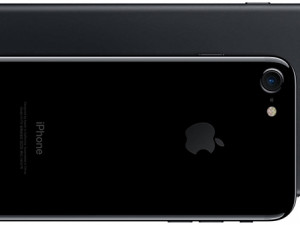
Apart from their dimensions, the biggest difference between the iPhone 7 and 7 Plus is in their cameras. Now they both feature Optical Image Stabilisation (OIS), whereas last year only the iPhone 6s Plus was equipped with that technology to compensate for shaky hands. The major differentiator is the secondary camera on-board the iPhone 7 Plus.
But let's cover the similarities first. The main (rear) camera on both models has a 12-megapixel sensor using a standard 24mm-wide angle lens. It features a f/1.8 aperture, which is quite an improvement over the f/2.2 of the iPhone 6s (Plus). In practice, this should result in better picture quality at low-light scenarios. The actual size of the imaging sensor has remained unchanged at 1/3.06-inch, which is marginally smaller than that of the Samsung Galaxy S7 (1/2.3-inch).
One of the first thing I tested with the iPhone 7 and 7 Plus main camera, is the speed at which it grabs images. Compared to the iPhone 6s the new iPhones are equally fast in Burst-mode, which can be enabled by simply holding the shutter button.
Image quality
To determine the image quality of the main camera and compare it to that of the Galaxy S7 and iPhone 6s, I took multiple pictures both in low light and bright scenarios. The iPhone 7 Plus' secondary camera was left out of this specific test.
At first glance, all three phones have no trouble taking excellent photos. However, after zooming in at the capture image file, the iPhone 6s' older hardware quickly becomes exposed. A lot of detail is visibly lost with this previous generation iPhone when compared to the Galaxy S7 and iPhone 7. When directly stacking up general image quality of the Galaxy S7 with that of the iPhone 7, the results are almost identical. With some captures, the S7 looks to offer a bit more detail and more vibrant colours, while in other test images the iPhone 7 shows slightly better picture quality with better contrast and less artefacts. However, in low-light situations the iPhone 7 (Plus) manages to outperform even the Galaxy S7, which has been considered the best. Until now that is.
Front camera
The front camera on the iPhone 7 (Plus) houses a 7-megapixel sensor, where previous generations had to make do with a 5-megapixel (iPhone 6s) and 1.2-megapixel (iPhone 6) version. The aperture has remained the same at f/2.2, though. As a result, pictures taken with the front camera are quite good, even in low-light scenarios. These improvements are also very noticeable when using the new iPhone for a Skype conference call or Apple's FaceTime app.
Secondary camera: iPhone 7 Plus
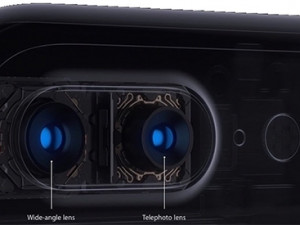
In addition to the main camera on the back of the iPhone 7 Plus, it features a second (56mm) one directly next to it. Apple markets this as the "Telephotolens" and it enables true and superior optical zoom, instead of digital zoom which decreases image quality the more you zoom in.
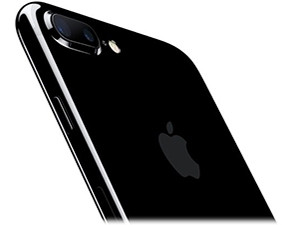
Incorporating true optical zoom into a smartphone must have been quite a challenge for Apple's product design department, since embedding this kind of technology normally goes hand in hand with a substantial increase in weight and dimensions.
For anyone keen on good photography, the additional camera will prove a great feature, allowing you to zoom in on an object without getting a grainy, pixel saturated image in return. There's a lot less need to physically get closer to the object or person you'd like to capture.
Sounds great right? Well, there are some downsides to the secondary rear camera. Its specifications are not on par with the primary main camera because it lacks optical image stabilisation, the actual sensor is slightly smaller (1/3.6-inch) and the aperture is just f/2.8, resulting in considerably lower light sensitivity. The iPhone 7 Plus does conveniently, and automatically, switch between the two rear cameras when zooming in and out again, based on the best lighting conditions.
Hardware: four cores at work
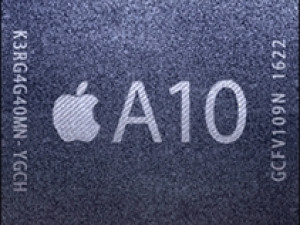
The entry-level versions of iPhone 7 (R12 999) and iPhone 7 Plus (R15 499) now finally feature 32GB of storage space, in contrast to the meagre 16GB of previous generations. Apple is far from a trendsetter in that department - a lot of competing brands have offered 32GB on their entry level flagship phones for some time now. It's a shame that the extra storage still comes at an additional price, though, when compared to the 16GB iPhone 6s (R11 799) and iPhone 6s Plus (R13 599). The new iPhones are now also available with 256GB, which pushes the price to a massive R19 499 for iPhone 7 Plus. So, what does all that cash get you?
The new iPhones run on a pretty sophisticated System-on-a-Chip called the Apple A10 Fusion, produced by TSMC. This 16nm, 64-bit chip is actually Apple's very first mobile quad-core processor. Previous generation SoCs worked with just two cores for all the number crunching. Additionally, the iPhone 7 Plus now houses 3GB RAM in order to properly deal with the added camera functionality. Just like the iPhone 6s (Plus), the iPhone 7 has to make do with 2GB of RAM, which is sufficient for smooth operation and multitasking.
The four cores that make up the A10 Fusion SoC are split into two pairs. The first pair are blazingly fast, high-performance cores while the other two are energy efficient versions for less stressful tasks. The two 2.23GHz high-performance cores come into play during activities like gaming or HD video editing. If you're doing standard office tasks like checking your email or browsing the web, the energy efficiency cores take the wheel. This technology isn't new, though. Quad-core chips from Qualcomm, like the Snapdragon 820, have been using the big.LITTLE-concept for a while now. Still, it is nice to see Apple finally adopting this technology in their own SoCs.
Performance: best of the best
Ok, so the new iPhone has some nifty sounding specifications, but how do these translate into pure performance? To find out, I ran the GeekBench 4 multi-core benchmark to get a good indication of their processor and memory capabilities.
All test results were compared to those of comparable (both in price and technology) devices from other brands. This cross-platform test clearly shows the new iPhones are the new king of the hill, closely followed by Samsung's S7 (Edge).
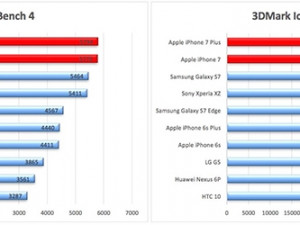
After GeekBench, I confronted the new iPhones with 3DMark Ice Storm, a benchmarking tool that primarily aims to determine the maximum graphical (GPU) performance, but also uses the main CPU and memory to show off its capabilities. Again, the iPhone 7 and 7 Plus top the charts, but this time easily outperforming its closest rival.
As can be expected from these test results, both new iPhones work smoothly in day-to-day handling, can swiftly multitask and have no trouble running performance-hungry apps. Anyone planning to use the iPhone 7 (Plus) for relatively simple office tasks like emailing, reading documents, browsing websites, listening to music and the occasional YouTube video will have an overkill of horsepower in their hands and might even consider going for its somewhat cheaper predecessor. After all, these test results show the iPhone 6s (Plus), also updated to iOS 10, to still be a very decent performer.
Battery life: minor improvement
Although it seems Apple decided to use the freed up space, from removing the legacy 3.5mm audio jack, to include a larger TapTic engine, they also managed to cram in more battery capacity.
The iPhone 7 now has a 1.960mAh battery where the iPhone 6s housed a 1.715mAh version, while the iPhone 7 Plus went from 2.750mAh to 2.910mAh. When combined with the energy efficient, high-efficiency cores of the A10 Fusion SoC, this should theoretically result in a considerable improvement in terms of battery life. Apple claims the iPhone 7 Plus should last an hour longer than its predecessor and the iPhone 7 even two hours longer.
To see if that claim holds ground, I ran two benchmarks to emulate realistic user-scenarios while keeping screen brightness of all devices identical, to keep things honest and fair.
The browser test, which follows a script that continuously keeps the devices browsing and scrolling through various websites until there is no more power left, showed that both iPhones are quite on par with Apple's claim, but still unable to beat Samsung due to their superior, energy efficient OLED screen technology. Taking some idle time into account, the iPhone 7 will last for about 11 hours while the iPhone 7 Plus should last about 11 hours and 40 minutes - more than enough to get you through a full working day, overtime or just killing time while in a traffic jam.
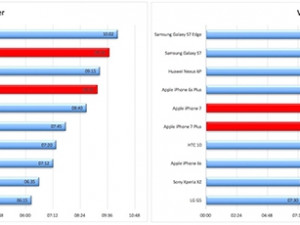
The second test stressed the devices with displaying non-stop Full-HD content until all energy is depleted. Here the new iPhones don't excel but won't disappoint either, with more than nine hours and 30 minutes of playing time. Samsung's S7 (Edge) device clearly blows the completion away, again mainly as a result of their superior OLED screen technology. The iPhone 6s Plus remarkably lasts a bit longer in this video test than both the new iPhones.
Charging
Fully charging the new iPhones takes a little bit longer than with its predecessor, which can be explained by the larger battery capacity. Still, the new iPhones take quite a long time to charge and Apple unfortunately doesn't include a quick charger. The iPhone 7 took two hours and 20 minutes to charge from scratch to 100% while the iPhone 7 Plus needed a long three hours and 15 minutes to do the same. To put these numbers into perspective, Samsung's Galaxy S7 Edge does the job in one hour and 45 minutes while the iPhone 6s requires just over 2 hours.
I also measured how much energy the battery would absorb after exactly 30 minutes of charging. In case of the iPhone 7, it showed to be at 26% while the 7 Plus got stuck at just 17%. The Samsung Galaxy S7 Edge, on the other hand, had no problem reaching 45% after just half an hour of charging.
In the end, the new iPhones are relatively slow charging devices. This can be mitigated by purchasing a separate 12-Watt charger, but it's a shame Apple didn't include this in the box.
iOS 10: Apple opens up
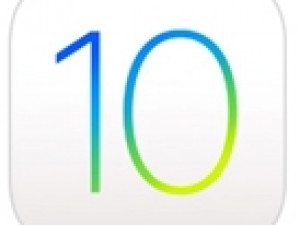
Apple traditionally combines the launch of a new iPhone with the unveiling of a new version of their mobile operating system. With new hardware comes new software to make that perfect fit, as Apple likes to boast.
With iOS version 10, much has been changed, optimised and added. The company from Cupertino has even opened up partial access to the system for third-party developers, which is a very promising move to break down the so called walled garden (closed ecosystem) that negatively surrounds Apple as a brand.
Access and lock-screen
As soon as you pick up the new iPhone, or take it out of your pocket, the screen pops on so you can easily check messages or notifications without having to press any button.
In addition, the way you unlock the phone has changed, which does take some getting used to for most people. For almost 10 years, the iPhone could be unlocked by swiping to the right and entering your pin code. Now, with iOS 10, just press the Home button while the device simultaneously scans your fingerprint. Instead of the pin code-screen, there are now widgets on the left of the notification area. They also appear when swiping down and to the right, straight from the app-screen. These widgets now also allow for more control, like the positioning and the amount of information they display.
App overhaul
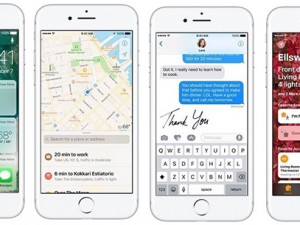
In iOS 10, Apple has overhauled some of their own apps. The Music and Health app now come with a fresh new look and the Notes app facilitates working together in the same document. The Clock app can now track you sleeping pattern, while Apple's Mail app comes with a handy filter option to hide messages that you've already read. The completely new Home app enables you to manage your home automation equipment like compatible air-conditioning and lighting.
Bigger changes can be found in the Maps, Messages and Photo apps, though. The latter now intelligently (using machine learning and AI) tries to bundle photos and video fragments that are related by date, location and time of capture, thus creating something Apple named Memories. It is comparable to Google Photos. Related captures can automatically be formed into an entertaining movie, including music and effects that can be tweaked here and there. Naturally, the generated movie can easily be shared through all major social networks. In practice, this Memories novelty works very well, it is fun and definitely a great feature to have on-board.
The Map app has also seen an interface update, looking clean and fresh. It can now show the temperature per location and even the current weather if you zoom in enough. When using the Map app for navigation purposes, it shows things like restaurants, ATMs and gas stations along the route and even supports directly ordering an Uber ride.
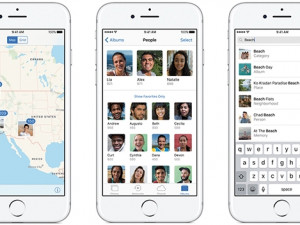
The latest version of Messages app has been given loads of new functionality too. The Digital Touch option facilitates live drawings, effects and various delivery options. Third-party developers now have access to the Messages app, Apple's Digital Assistant Siri. The Messages app has its very own App store that offers tons of sticker packs, productivity-tools and games. Developers can now also directly access Siri's function. For instance, you can tell it to send a WhatsApp message, make a payment or order an Uber transport. Just say "Get me an Uber" and it will start searching for nearby driver. How cool is that?
Although unfashionably late, Apple finally decided to allow RAW-format image support. The embedded camera-app doesn't support it directly, but third-party developers can add the format support themselves. Apps like ProCam 4 and Adobe Lightroom already embrace editing RAW-images in their latest update.
These were just some of the highlights and novelties that are new to iOS 10. For a more detailed overview, see here.
Final verdict
With the latest generation iPhones, Apples has improved on what was already a great phone. The iPhone 7 and 7 Plus are even more expensive than their predecessors, but they also have more to offer. In addition to being faster, having a slightly longer battery life and somewhat better screen/audio specs, the new phones come with a few much desired, really functional advantages - one of the most significant being their resistance to water and the extra camera on the iPhone 7 Plus.
That being said, the question remains if you should trade in your old iPhone and get ready to spend some serious cash. The answer is absolutely yes if you're currently using an iPhone 5s or older. However, iPhone 6s (Plus) owners might find the new models to offer too little improvement and would be wise to save up and wait another year.
Anybody who is fearful about damaging their beloved iPhone with water, or who is exceptionally keen on photography, will find the newest models to be a no-brainer and should definitely consider a trade-in at their nearest Apple retailer.
Share